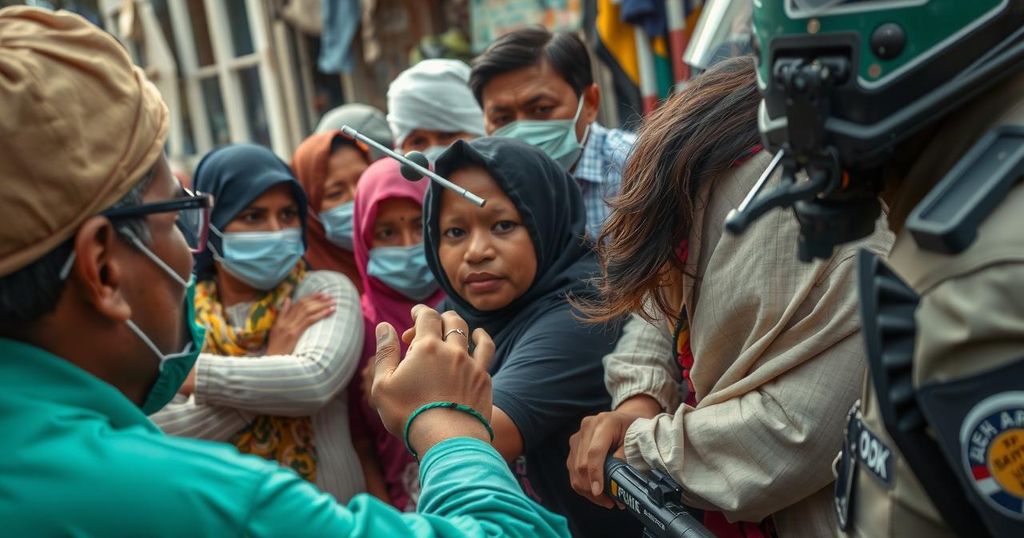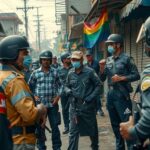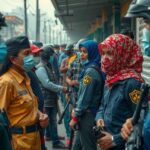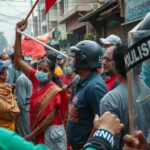Garment Workers Protest in Bangladesh: Clashes with Police Result in Injuries
Bangladeshi garment workers clashed with police on October 31 over job layoffs, resulting in two teenagers being shot. The protests, sparked by the closure of a factory, highlight ongoing discontent in the critical garment sector, which is vital to the nation’s economy. Recent disturbances have led to injuries and damage, compounding existing frustrations regarding labor rights and conditions.
On October 31, Bangladeshi garment workers expressed their outrage over job layoffs by clashing with numerous police and soldiers in Dhaka. The unrest, which resulted in two teenagers being shot, stemmed from protests against the abrupt closure of a garment factory essential to the country’s economy. With thousands participating in the demonstrations, significant violence erupted, leading to damage of security vehicles and heightened tensions among workers seeking stability in their employment.
The garment industry is critically important in Bangladesh, representing approximately 85 percent of the nation’s $55 billion annual exports. This sector makes Bangladesh the second-largest clothing exporter in the world, following China. The protests correlated with ongoing distress in the industry, particularly in light of substantial job losses and worker dissatisfaction over pay and working conditions in the wake of factory closures over recent months. Mohammed Faruq, a police officer at Dhaka Medical College, confirmed the injuries of both teenagers, aged 15 and 17, who required immediate medical attention.
In the context of broader unrest following the ousting of former Prime Minister Sheikh Hasina in August, the protests represent a continuation of labor strife within the garment sector. Demonstrators are demanding not only enforcement of previous job guarantees but also increased wages for their labor. Previously, tensions had flared leading to violent clashes, which resulted in fatalities among workers and compounded existing financial losses, summing to an estimated $400 million since August, as reported by industry associations. Thus, while seeking to quell these disturbances, authorities face the dual challenge of restoring peace and addressing the dire needs of the workforce that sustains this vital industry.
Bangladesh’s garment industry is a cornerstone of its economy, serving as a major source of export revenues. The sector has been experiencing increasing unrest and conflict that stems from deep-rooted frustrations among workers regarding labor conditions, job security, and payment frameworks. The ongoing protests are reflective of broader economic issues exacerbated by recent political upheaval, leading to significant disruptions that jeopardize both employee welfare and industry viability. As the workers mobilize for their rights, the response from authorities plays a crucial role in shaping the future relationship between labor and industry.
In summary, the clashes between Bangladeshi garment workers and police underscore the urgency of addressing labor rights and conditions in an industry that supports millions of livelihoods. The protests are a manifestation of escalating frustration due to layoffs and poor working conditions, which, if left unaddressed, threaten the stability of a vital sector in the Bangladeshi economy. As the industry continues to face immense pressure, both workers and management must engage proactively to foster a sustainable and fair working environment for all parties involved.
Original Source: www.heraldmalaysia.com








Post Comment